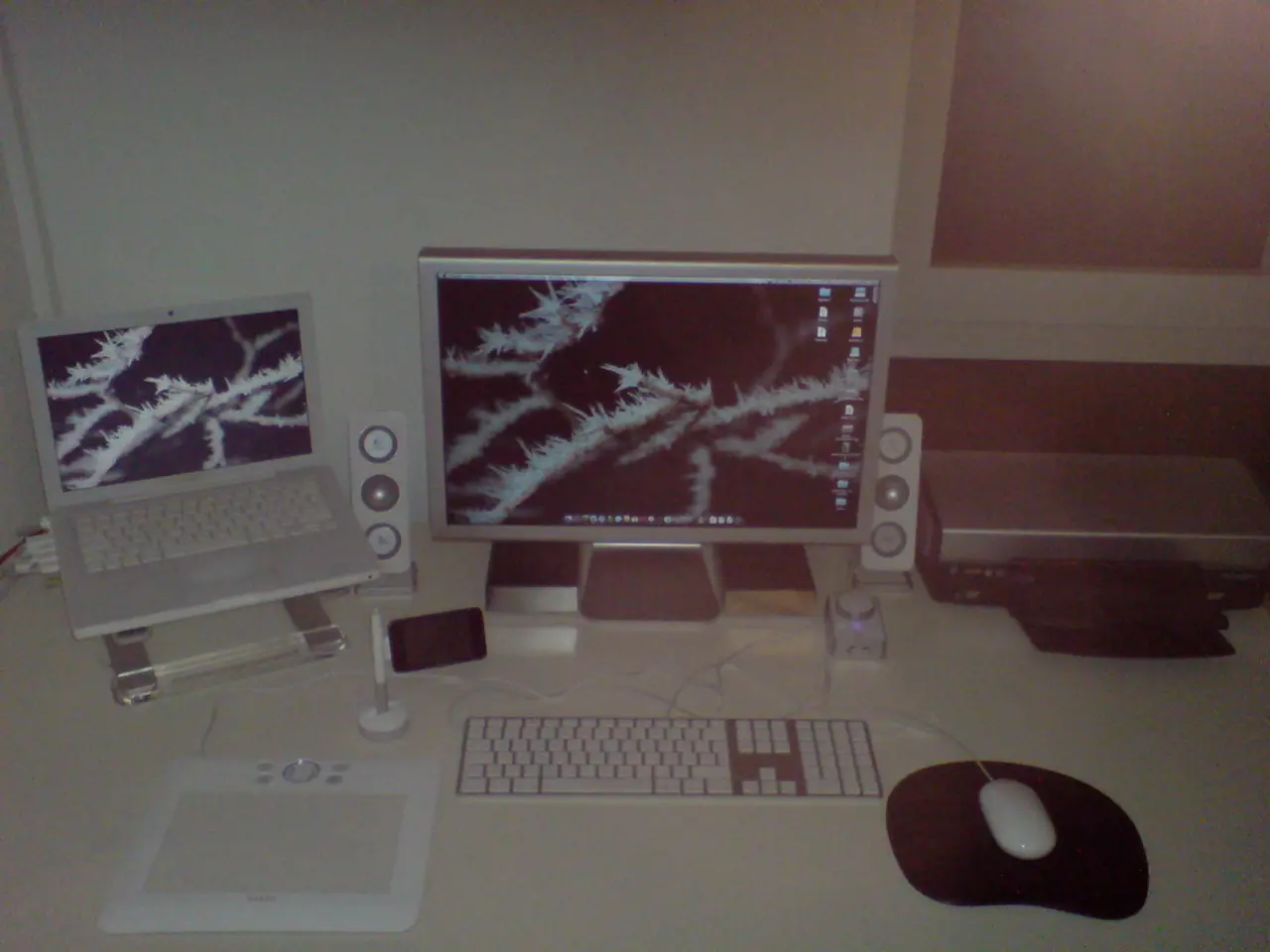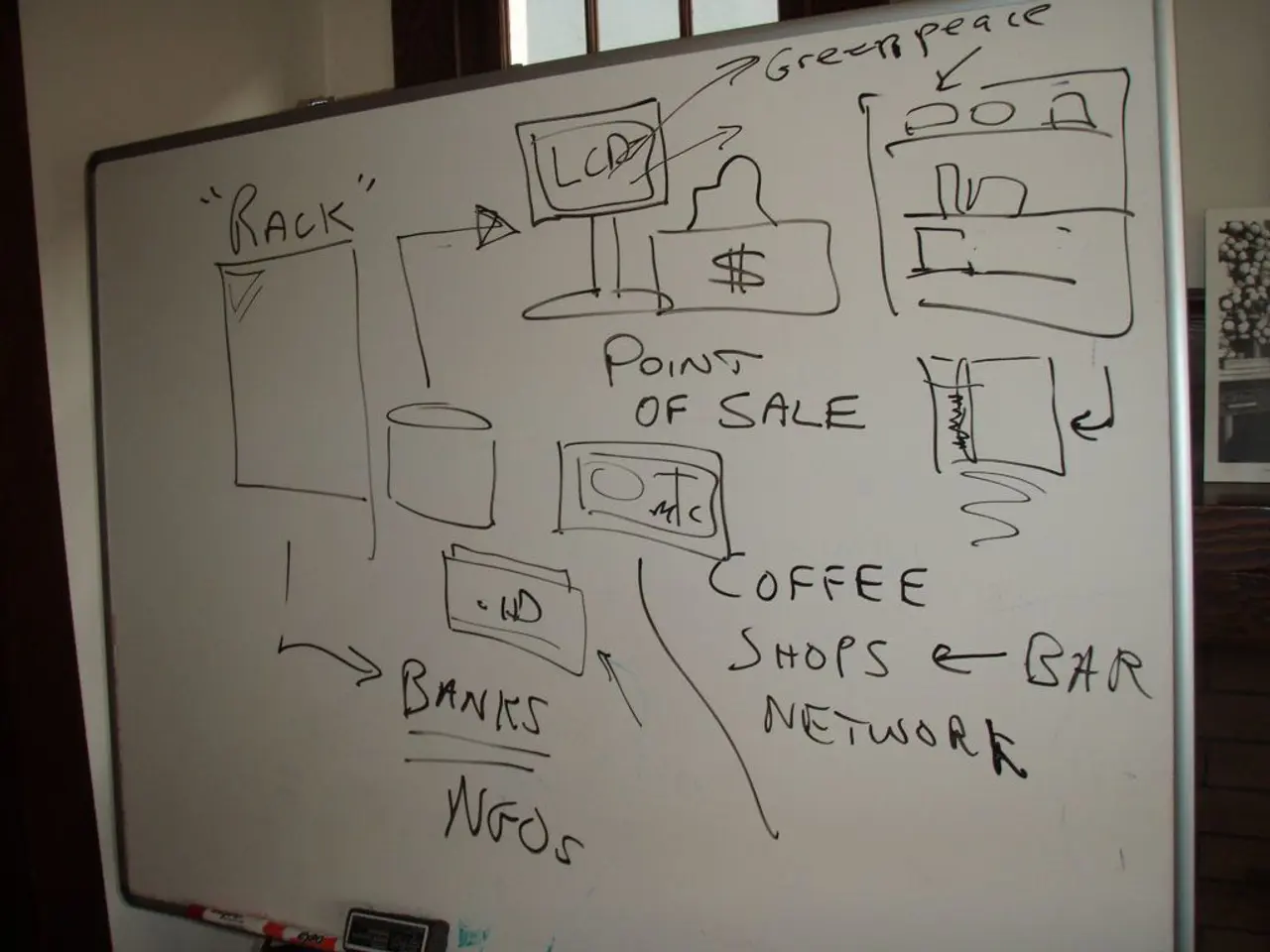Guide on Employing Versatile Components to Bolster Concurrent Task Management
==================================================================================
In today's digital age, multitasking has become a common practice for many users. Whether it's watching a movie, relisting eBay items, or writing an email all at once, the need for a flexible and customisable user interface is more important than ever.
Enter the 'movable pieces' design pattern, a solution that allows users to resize and move panels around the user interface to suit their needs. This design approach, supported by the Spectacle app, offers shortcuts for quickly resizing and positioning windows on the screen, providing users with optimal control over their digital workspace.
When multitasking, users often find themselves lost in a whirlwind of information and unintentionally resized windows. To combat this, it's essential to implement a handle for easy movement of panels and a 'revert to default' action for users who no longer want the customised layout. Adobe, for instance, provides a 'revert to default' action in its creative suite for expert users who no longer need their customised view.
The ability to customise displays can significantly improve productivity. Users can prioritise their tasks and actions by arranging panels in a way that suits their workflow. Each person will likely have an ideal arrangement for arranging information and graphical user interface elements.
To make the 'movable pieces' design pattern more intuitive, it's crucial to use drag-and-drop interactions with clear visual feedback. Highlighting drop zones before an item is dragged and allowing selection and movement of multiple items at once can greatly improve the user experience. Maintaining consistency in draggable components, providing accessibility alternatives, and integrating seamlessly with the overall design system are other best practices for implementing this design pattern effectively.
In conclusion, enabling expert users to multitask and customise effectively through movable UI pieces involves clear visual cues, multi-item movement support, component consistency, accessibility provisions, and integration with the broader UI design system. These practices combine usability, efficiency, and user empowerment, which are crucial to adapting interfaces for expert multitasking and customisation.
References:
[1] Nielsen, J. (2014). Usability 101: The Movable Pieces Design Pattern. Nielsen Norman Group. Retrieved from https://www.nngroup.com/articles/movable-pieces-design-pattern/
[2] Whiteside, G. (2015). The Movable Pieces Design Pattern: A Guide for Designers. Smashing Magazine. Retrieved from https://www.smashingmagazine.com/2015/03/the-movable-pieces-design-pattern-a-guide-for-designers/
In the realm of interface design, design patterns such as 'movable pieces', 'ui design', and 'ux design' play a significant role in enhancing multitasking capabilities. Technology allows for the implementation of (1) drag-and-drop interactions and seamless integration with the overall design system, which are key aspects of the 'movable pieces' design pattern, as referenced in [1]. Additionally, understanding and applying design patterns like 'ui design' and 'ux design' ensures an efficient and user-empowering interface, thus contributing to the adaptability of interfaces for expert multitasking and customisation, as discussed in [2].




